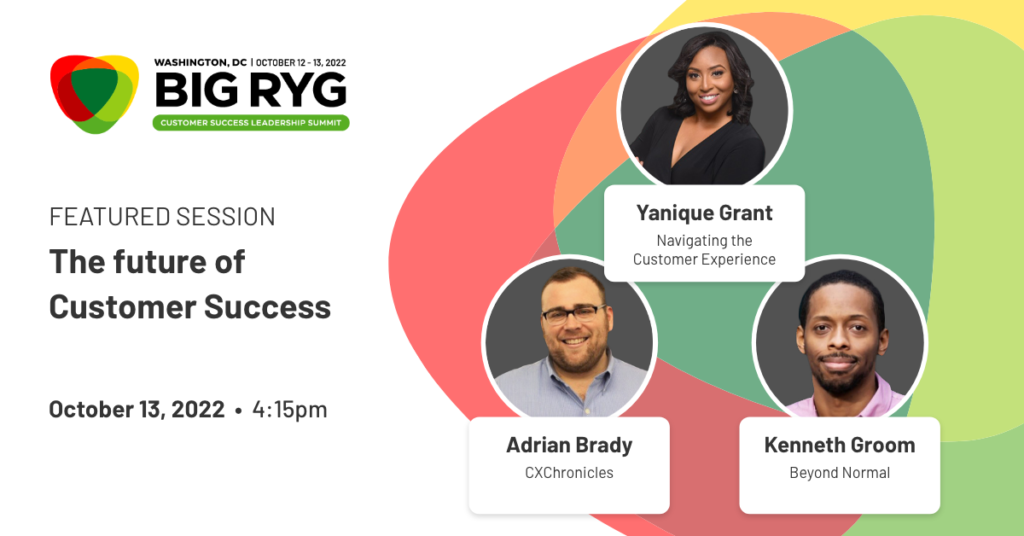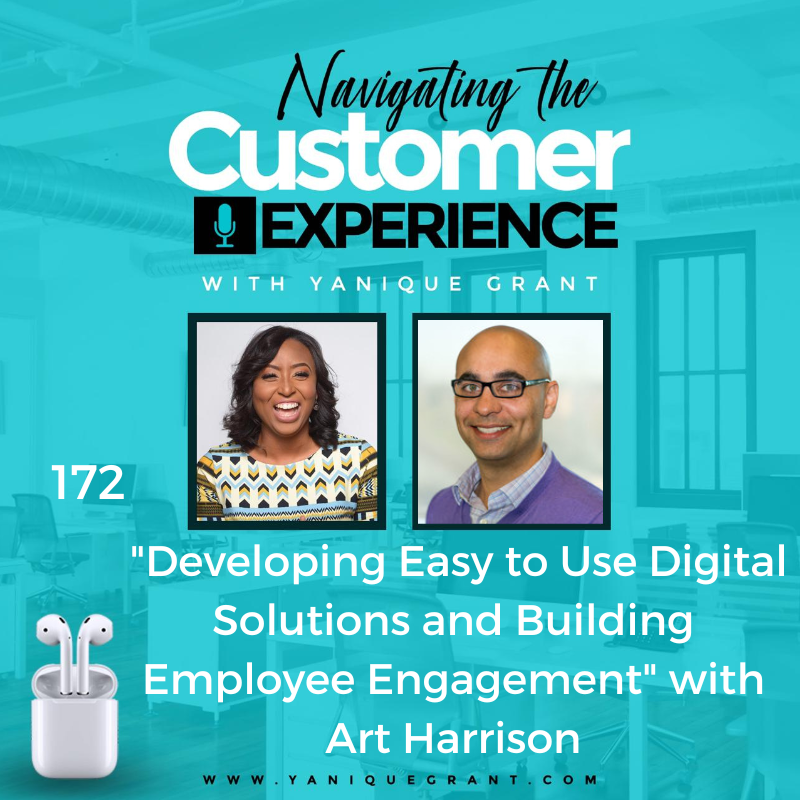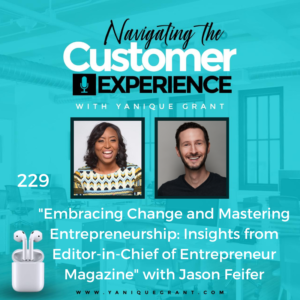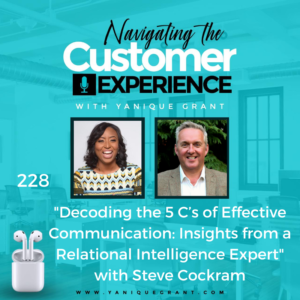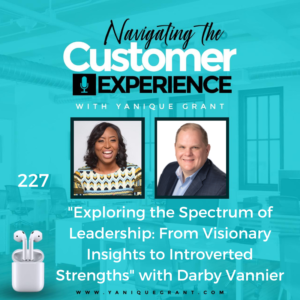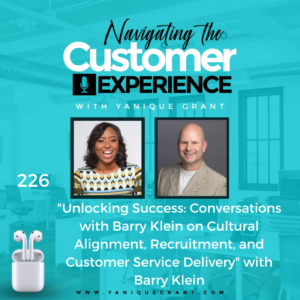Art Harrison is the Co-Founder and Chief Growth Officer at Daylight. He’s an experienced entrepreneur and leader with over 20 years of experience developing and delivering production grade solutions. With a background in computer science and software development, Art was previously Vice President at iNTERFACEWARE and previously founded MXD Communities in 2001.
Questions
- Could you share a little bit about your journey, how did you get to where you are today?
- Could you tell us a little bit about Daylight? And what Daylight does and how Daylight is helping their customers achieve their goals?
- Could you share with us how is it that consumers or organizations are able to increase their overall customer satisfaction and brand loyalty by offering positive and engaging Omni channels CX at scale?
- Could you share with our listeners what low-code is for those listeners who are not familiar with that? And why do you believe it’s disrupting the CX landscape?
- You’re in the CX space, as well as the design space, could you share with us maybe one or two things that you’ve seen emerge in the last few months that you will see as an ongoing trend, at least for 2023 in this space?
- Could you also share with us what is the one online resource, tool, website or app that you absolutely can’t live without in your business?
- Could you also share with our listeners maybe one or two books that have had a big impact on you, it could be a book that you read a very long time ago, or even one that you’ve read recently, but it still left a great impact on you.
- Could you also share with us what’s one thing that’s going on in your life right now that you’re really excited about? Either something you’re working on to develop yourself or your people.
- Where can listeners find you online?
- Now, could you also share with our listeners, do you have a quote or saying that during times of adversity or challenge, you will tend to revert to this quote, it kind of helps to get you back on track if for any reason you get derailed.
Highlights
Art’s Journey
Art shared that like most people, it’s been an interesting journey, it’s not one that he would have mapped out in advance. But he’d say he’s always been passionate about using technology and building things. And he thinks that’s been really the guiding principle of his career. So, he started off very entrepreneurial in the social networking and online dating space when he was in university. And really what he found from that led him to marketing and ultimately led him back to being a founder again, here at Daylight.
And it was just a passion to build things that people want to use, and to find ways to delight customers and end users along the way. And even though his career has spanned technical and marketing and other kind of lanes, the common thread has always been, “What do people need? And how can we make their lives better and delight them along the way?” And so, it’s been an interesting journey. But he’s always excited about where it’s going to lead him next.
About Daylight – What Does Daylight Do and How Daylight Helping Their Customers Achieve Their Goals
Art said absolutely. And kind of an interest of this podcast, Daylight is kind of in the space of customer experience, in that they’re a platform that helps large enterprises primarily, but really any organization that knows how they want to improve the experience they’re providing, not just to their customers, but to their employees as well.
And they’re a platform that allows them to rapidly design, build and deploy solutions that really touch on that interaction between people and process. So, the simplest example he can give you is the TurboTax type of example, where you have the IRS and the United States, the CRA in Canada, any other tax agency, they have a business process, but it’s a terrible process for most people to interact with.
And TurboTax and the tax industry exists to create a better on ramp that’ll guide people through that process in a way that’s intuitive to them and is the way they’re used to working with other solutions, not just paper forms and addendums. Daylight is a platform that lets organizations build that kind of an experience for any interaction that their customers or their employees are having and to do it at scale across the entire organization. So, they’re touching more places, and then proving that experience at every interaction that people are having with the business and their services or processes.
How Organizations Increase Their Overall Customer Satisfaction and Brand Loyalty by Offering Positive and Engaging Omni Channels CX at Scale
Me: Now, one of the areas that we would love to discuss with you, as we have you on our podcast is could you share with us how is it that consumers or organizations are able to increase their overall customer satisfaction and brand loyalty by offering positive and engaging omni-channels CX at scale? Could you share a little bit about that with us?
Art shared that it’s a broad question, but he does think there’s a lot of ways. Part of the thesis and a hypothesis when they were starting Daylight was this understanding that most organizations are primarily invest in the major touchpoints that they have with their clients.
So, you think about any lifecycle of a client, there’s the research and acquisition phase or the signup phase, whatever you want to call it. So, how are we going to bring this customer in and most people are investing a lot of money to try and make that experience as pleasant as possible.
And then there is the renewal or upsell phase, a lot of investment goes in there. But everything that happens in between that is actually what leads to their satisfaction, their probability of churning or abandoning or leaving that organization and so when you can start thinking about what are all the ways that they need to interact with us, it may be that they’re just looking for information, they’re looking to change some basic information about themselves, their family, their account. And so, when you start thinking about how do we improve the CSAT scores or the NPS for the employees, it’s really looking and saying, “Okay, we know we’ve got the book ends really well.” But there are dozens of times where that friction, they’re leaving friction in place, or they’re creating friction for someone just to talk to someone to understand, “Hey, can I change the payment date that I have?”or “I’ve just got married, I want to update some of my information so that my family is included in my account.”or whatever it may be.
When they can look at that and say, “What are all those touch points? How can we make a bigger impact and improve the experience across all of those areas?” And furthering that to like, how do they want to have that experience? It’s one thing to say we’re going to make everything available online and self-service and there is a core group of customers that care about that. But you need to also think about, well, sometimes there’s a lot of information there, or it’s someone that doesn’t want it, they just want someone to take care of it for them.
You have to look at the entire lifecycle and all of the interaction points and find ways to create a more natural experience in any of those.
But one of the key things that they talk about at Daylight when they’re talking with customers, is changing this mindset of, “I have a business process, I have something that I want to accomplish and so I’m going to push it on to the customer in the way that I need it for them to give me their information.” So, you think about a bank, they have a process for anything, you want to open a new checking account, this is how they need the information. And historically, they would even if they were digitizing it, they take their process and put that online. But that’s not how we think, as consumers, we don’t think about their business process, we think about the outcome we want to have or the experience. So, you have to kind of evaluate all of those touch points from the perspective of the person doing it and try to make those improvements.
What is Low-Code and Why is it Disrupting the CX Landscape?
Me: Now, in preparing for this interview, I noticed that when you were introduced, it was introduced that you were a good candidate to speak about how low-code is disrupting the CX landscape. Could you share with our listeners what low-code is for those listeners who are not familiar with that? And why do you believe it’s disrupting the CX landscape?
Art shared that typically, a low-code, it can mean a lot of things for a lot of people but the simplest description of that is historically, anything that you were building new, a technical task required software developers, designers, people on the technical side of the spectrum, to understand your needs, and build that solution for you to the best of their understanding. And what low-code does is it changes the paradigm so that by reducing the technical bar to build new solutions, you’re shortening the distance between the person who actually knows the problem, and most likely even knows what the solution would be. And that solution getting built.
So, low-code exists in just about any category, any industry, he’ll think of some brand names he has no affiliation with but, whether it’s GoDaddy or Squarespace, or any website builder, 10 years ago, 20 years ago, you had to learn HTML, you had to learn how to code a website.
Now, you can go on to a low-code solution where you’re dragging and dropping and building something that is professional grade, that looks amazing, that works on any device, that’s low-code transforming, who can build websites. And when you think about the experience realm, whether that’s digital experiences, the employee experiences for someone that works in a branch, the tools that are going to make your call centre more effective, any area that typically was relying on a service like an integrator or an SI, or a technology team within their own organization, they were waiting in the queue, depending on the size of their budget to get work done, they might have to wait months and months, they get something done eventually, but it’s not what they wanted.
Low-code really changes that because now that person that is on the front line, who knows this is where it’s always problematic with a customer, “I wish that I could just automatically do these couple of tasks or I wish I knew what to do when they said that they want to purchase this product or change their account in this way.”They understand that problem and low-code empowers them to build if not 100%, 80%, 90% of their solution directly, and keep changing it when they actually use it in the field. And so, it just means the iteration, the time to value and the bar or the barrier to making these better experiences is dropping. And that means you’re going to continue to see improved experiences that are really meeting the needs of employees and customers across all kinds of organizations.
Me: All right, so basically making things more accessible to the average person. And I guess it really boils down to as you were saying, as I was listening to you, it really boils down to, I believe, also ensuring that everybody can have access to do the exact thing. When you were speaking just now, I was thinking of Canva. And I was thinking of back in the day, if you wanted to do a flyer or some form of publication for marketing or advertising, you typically get a graphic artist or even an advertising agency who have the talent in house to get it done. But I mean, you can become your own designer with Canva, they’ve made it so easy. And I thought of that when you’re talking about making the design process and the coding process so easy.
Art stated that that’s a perfect example. And he’ll tie it back, again, he spends a lot of his time talking to these large enterprises that literally have 10s of 1000s of processes that are happening across the organization and insurance company has all different types of claims and policies and managements and call centres and issues that they’re dealing with. The bank has branches and wealth products and everything else, they have so many. And going back to that TurboTax analogy, a lot of them are stressful. Like doing your taxes is inherently a stressful thing. You’re worried if I do it wrong, am I going to get audited? Am I going to make a mistake? You kind of feel adversarial, like the person that I’m providing this information to doesn’t actually have my best interests at heart.
When you can take all of those processes and reduce the cost to actually make something that’s more intuitive, more delightful, you’re enabling the people on the business side who know that we can improve the experience, our satisfaction scores, to make that improvement. You’re improving the lives of the people that need to provide the information in.
As he said, often stressful experiences, it’s like taking a test, you’re really changing the dynamic of what can be addressed, how easily, how cost effectively it can be and then dramatically changing the types of experiences that can be built, you can take something like taxes, and turn that into something where it’s more conversational. “Hey, did you change jobs this year?” “Great. Tell me about your new job.” “Did you get married?” “Great, there might be a tax benefit for you.” You took something that was previously just here, fill out box 66 and made it into something that now feels like, “Hey, this is working with me, this is a very different emotion, a very different experience that I’m interacting with this organization or this business process.”
In the CX Space and Design Space, What Are Things That Have Emerged in the Last Few Months that Will be an Ongoing Trend in 2023?
Me: So, we’re approaching pretty much the end of 2022, I can’t believe that we’re almost in the final quarter of the year, like it just started. And you’re in the CX space, as well as the design space, could you share with us maybe one or two things that you’ve seen emerge in the last few months that you will see as an ongoing trend, at least for 2023 in this space.
Art shared that for him, and he’s only one perspective and as he says to his own clients, the clients of Daylight, he’s in the vendors mindset. So, as much as he works hard to stay neutral or to be very open and really help people find the best solution for them, regardless of his organization, he still only sees it from his perspective, so always a grain of salt. But what we are seeing, not just in the last couple of quarters, but really for the last few years, particularly during the pandemic, it’s escalated, and it continues to grow, no one is stopping work on the customer experience. But some of the same teams and technologies and approaches that people have really heavily invested in to improve customer experience is shifting to include a lot more on employee experience.
As we’ve all been remote as we have, as consumers, we are seeing these better experiences, it’s really hard to have an amazing experience shopping online or interacting with your Robo Advisor account for your investments, and then going to work and using the worst technology or being stuck to deal with terrible processes, terrible communication channels. So, we’re seeing a really increasing push on the need to improve employee experiences to do their job, whether they’re directly supporting customers, or whether they’re doing internal things, HR, anywhere else.
Because it’s becoming essential to retain the teams that you have, people just don’t want to, they have the flexibility to work anywhere, because the barriers of geography are kind of breaking down. So, the importance of improving the quote, unquote, customer experience of your employees seems to be always increasing and we’re really seeing some exciting changes to how people are supporting their teams across the board.
App, Website or Tool that Art Absolutely Can’t Live Without in His Business
When asked about online resources that he cannot live without in his business, Art shared that that is a tough one, he would say it’s not a glamorous tool by any means but for him, it is probably, he would say any video conferencing. For him, he spent so much time just talking to people, understanding what their objectives are, what their goals are, whether that’s his team, whether that’s their customers, whether it’s just peers in the industry. And if they didn’t have access to that, and the ability to still make connections, even when they’re geographically dispersed or kind of on locked down with a pandemic.
He feels like this last couple of years would have felt really isolating, he wouldn’t have made the connections and the growth that he’s made personally, professionally with his team. So, there’s a lot of other way cooler tools that he uses kind of in with his marketing brand, or his technology brand. But if you took away his ability to just connect with people, see their faces and still build meaningful connections, he doesn’t know what he would do. So, he thinks that still to him is the most valuable app.
Books that Have Had the Biggest Impact on Art
When asked about books that have had the biggest impact, Art shared that he’s going to give a weird one here and it’s just because he consumes a lot of information. A lot of it is articles and long form. But there’s a book, when you asked him that there’s a book, a professor recommended when he was young, and this is not for everyone to read. But it made a big impact on him just opening his eyes in the numbers way.
So, it’s not about CX or UX, but there’s a book called the One Two Three…Infinity: Facts and Speculations of Science (Dove Books on Mathematics) by George Gamow. And it was a computer science professor that at the time basically said, “If you can read this and understand this, then I want to work with you on some side projects.” So, it became a motivation for him to just expand what does infinity even mean? And for him, the keener in him to want to get in the good graces of that professor. So, that just had a big impact on him. And his wife actually recently purchased that one for him, because he had talked about it. Something that I had read in my university days.
Then the other book that comes to mind, and he’s just beginning it right now. And he’s had it on his shelf for a long time, someone handed it to him before, it’s called The Book of Business Awesome/The Book of Business Unawesome by Scott Stratten. So, that’s another book, he can’t see the impact it’s made on him yet but that’s next up that someone has recommended, and he’s going to be reading next.
What Art is Really Excited About Now!
When asked about something that he’s excited about, Art stated that one of the things he’s really excited about, well, he’s always excited about his family. He’s got two kids that are going through transitions of kind of where they are in life. They did their first year away at a sleepaway camp this year, they’re in middle school, one of them is in middle school. So, the keeping up with them, his son actually recommended a podcast to him, a business podcast, he’s 11 years old, that he’s actually loving.
He’s really excited about the changes of, they’re giving him interesting things that are stretching his mind now. So, that’s pretty cool. And one of the things, he’s excited about, it’s a little cheesy, but they made a big investment at their organization in a communication framework. It’s kind of under a selling framework. It’s a little plug for the group there called The Value Selling. What he really likes about it is it really gives a framework for how to have conversations, to understand where people want to go, what’s stopping them from getting there? And then what they believe the solution would be and how to attach to that.
Now, usually that’s used to sell or to do better by your clients and be aligned, he’s really excited about what it’s been doing for his organization, for the one on ones. Something he’s wanted to get better at is how does he mentor and provide one on ones and coaching to the team? And using that same framework of them saying, where do I want to go? You want to be promoted? You want to get to this point in your career? Well, what’s stopping you? And what do you think you could do to further that, and then being able to have them know where they want to go and support them is putting a lot more direction to the one on ones he’s having.
And he’s really excited about how that’s going to make him a better manager, a better leader, and how he’s going to help the people on the team that he directly interacts with get where they are ultimately wanting to be in their lives, because that’s what breeds a great culture, a great team, and just great people across the board, whether they stay with them or not. So, he’s really excited about that.
Where Can We Find Art Online
Website – www.daylight.io
LinkedIn – Art Harrison
Quote or Saying that During Times of Adversity Art Uses
When asked if he has a quote or saying that he tends to revert to, Art shared that he does and he’s going to overshare a little bit. It’s not a famous quote, it just comes from his dad, and he’s the third Art or Arthur, the third, his son is now the fourth. They’ve been the Harrison family line, they’ve kept that tradition going and just from an early age, his dad would just kind of like no matter what adversity they were in, no matter what they’re going through, he’s like, “Don’t worry, it would either be intermix, you’re either a Harrison or you’re an Art, it’s going to work out, and it’s going to be fine.”
And it’s not that he was some wild success, it’s just that he really managed stress well, and just knew that life would work out the way that it was supposed to. And it really just embedded in his DNA. And so, whether it’s the hardest day, professionally or personally, whether he’s struggling with something, whether he’s excited about something, it’s just in there, and it’s kind of repeating in his brain all the time that like, it doesn’t matter if it’s going to work out, he’s going to prevail.
And he would say just to anyone listening, like that was the same philosophy even when he had the new-born babies, he and his wife were stressing about they’re not sleeping, he just had that same mantra, it’s going to work out, he’s going to figure out what it is that’s making this baby upset and he’s going to prevail. And so, that simple phrase of like it’s going to work out is what drives him and it makes you be willing to take on any challenge, knowing that at the end of this, there’s a solution. It’s going to work out even when it seems like it didn’t work out, that is it working out, it’s still leading you where you needed to be. So, that is the kind of quote or mantra that is always with him.
Me: I love that, amazing. And I think at some point in our lives, we all need to kind of give ourselves those kinds of affirmations. Because life can become overwhelming and daunting and sometimes it does feel like all the doors are closing around us. But if you do have that mindset, as Rhonda Byrne from The Secret says, “Thoughts become things,”then if you believe it’s going to work out, it will work out.
Art agreed that it will and it really lets you look differently at the things that seem to be the roadblock or seem to be the setback is that it’s still going to work out, he doesn’t know how yet, but he then tends to look back at all of those negative points and know that he wouldn’t be where he is today if he hadn’t been there. So, you change your perspective on everything when you just know that it’s working out the way it ideally can. To him it is his superpower because it really does make everything seem possible.
Please connect with us on Twitter @navigatingcx and also join our Private Facebook Community – Navigating the Customer Experience and listen to our FB Lives weekly with a new guest
Grab the Freebie on Our Website – TOP 10 Online Business Resources for Small Business Owners
Links
- One Two Three…Infinity: Facts and Speculations of Science (Dove Books on Mathematics) by George Gamow
- The Book of Business Awesome/The Book of Business Unawesome by Scott Stratten
The ABC’s of a Fantastic Customer Experience
Do you want to pivot your online customer experience and build loyalty – get a copy of “The ABC’s of a Fantastic Customer Experience.”
The ABC’s of a Fantastic Customer Experience provides 26 easy to follow steps and techniques that helps your business to achieve success and build brand loyalty.
This Guide to Limitless, Happy and Loyal Customers will help you to strengthen your service delivery, enhance your knowledge and appreciation of the customer experience and provide tips and practical strategies that you can start implementing immediately!
This book will develop your customer service skills and sharpen your attention to detail when serving others.
Master your customer experience and develop those knock your socks off techniques that will lead to lifetime customers. Your customers will only want to work with your business and it will be your brand differentiator. It will lead to recruiters to seek you out by providing practical examples on how to deliver a winning customer service experience!
Big RYG Customer Success Leadership Summit
October 12-13, 2022
Washington DC
